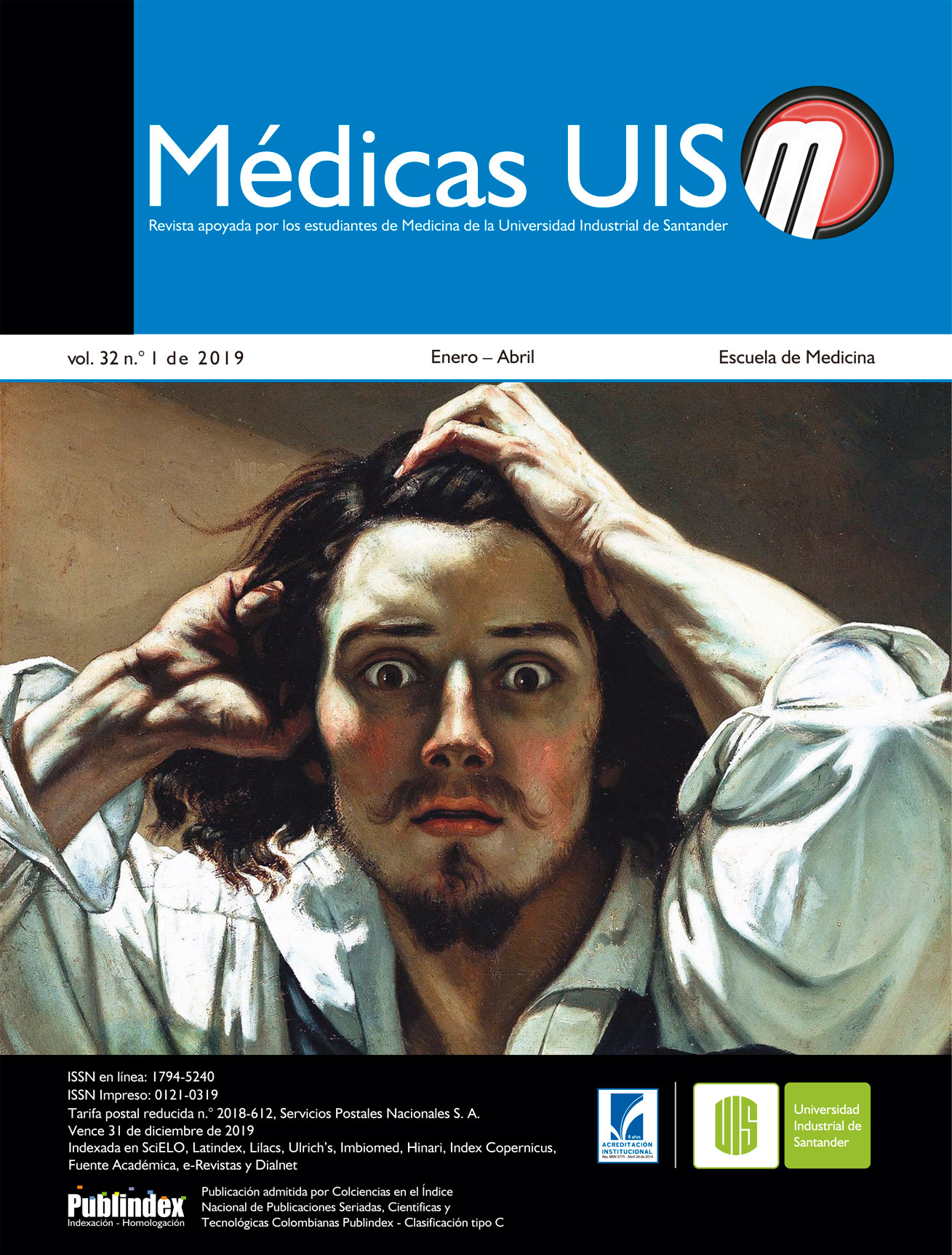Resumen
Los relámpagos se presentan con una frecuencia mayor a 50 veces por segundo a nivel mundial; sin embargo, las descargas directas suceden rara vez y son responsables del 5% de los eventos fatales. El mecanismo de lesión inicial es la parálisis de los centros vitales, lo que ocasiona apnea, fibrilación auricular o paro cardíaco. En mujeres embarazadas, el accidente por rayo puede producir complicaciones graves, dependiendo del punto de entrada en el cuerpo y su efecto indirecto sobre el feto, produciendo trastornos de la conducción en el sistema cardíaco y daño a nivel del sistema nervioso central. En la literatura mundial, solo catorce casos de embarazo y traumatismo por relámpago han sido reportados, sobreviviendo en todos la madre, con un único reporte de muerte fetal. Se presenta un caso de accidente por relámpago en una mujer embarazada en la semana 23 de gestación, cuyo tipo de lesión fue por contacto directo en el abdomen, y quien ingresó con compromiso neurológico, taquicardia materna y bradicardia fetal. El deceso materno ocurrió por infarto agudo extenso del miocardio y la formación de un émbolo intracavitario en el ventrículo izquierdo, con la consecuente muerte del binomio. Se describe su frecuencia, el mecanismo de lesión, las anifestaciones clínicas y el manejo actual. MÉD.UIS.2019;32(1):21-6
Referencias
2. Holle R. Annual rates of lightning fatalities by country: International Lighting Detection Conference. Visalia [internet]. 2008 [citado el 20 jun 2016]. Disponible en:
http://www.vaisala.com/Vaisala%20Documents/Scientific%20papers/Annual_rates_of_lightning_fatalities_by_country.
3. Forster SA, Silva IM, Ramos MLC, Gragnani A, Ferreira LM. Lightning burn: Review and case report. Burns. 2013;39 (2):8-12.
4. Muertes por rayo en Mexico. Cenaced [internet] 2017 [citado el 16 jul 2017]. Disponible en: http://www.cenaced.org.mx/es/blog/item/90-mueren-mas-por-rayos-en-mexico-que-en-otras-partesdel-mundo.html
5. Pierce MR, Henderson RA, Mitchell JM. Cardiopulmonary arrest secondary to lightning injury in a pregnant woman. Ann Emerg Med. 1986; 15(5):597–99.
6. Chan YF, Sivasamboo R. Lightning accidents in pregnancy. J Obstet Gynaecol Br Commonw. 1972; 79(8):761–62.
7. Guha-Ray DK. Fetal death at term due to lightning. Am J Obstet Gynecol. 1979;134(1):103–5.
8. Browne BJ, Gasch WR. Electrical injuries and lightning. Emerg Med Clin North Am. 1992;10(2):211-29.
9. Andrews CJ, Cooper MA, Darveniza M, Mackerras D. Lightning Injuries: Electrical, Medical and Legal Aspects. Boca Raton: CRC Press; 1992.
10. Galster K, Hodnick R, Berkeley RP. Lightning strike in pregnancy with fetal injury. Wilderness Environ Med. 2016; 27(2): 287-90.
11. Ritenour AE, Morton MJ, McManus JG, Barillo DJ, Cancio LC. Lightning injury: a review. Burns 2008fi 4(5):585-94.
12. Secretaria de Salud, Centro Nacional de Equidad de Género y Salud Reproductiva. Triage Obstétrico, Código Mater y Equipo de Respuesta Inmediata Obstétrica. Lineamiento Técnico 2016.
Ciudad de México: Delegación Miguel Hidalgo; 2016.
13. Rees WD. Pregnant woman struck by lightning. Br Med J. 1965; 1(5427): 103–4.
14. Dunscombe–Honiball O. Accidents and injuries caused by lightning. Br Med J. 1900; 1(2054): 1153–5.
15. Schieffer (1833). Quoted by Stricker, Virchow’s Arch Path Anat. 1861(20):54.
16. Navarro Escayola E. Valoración médico legal de lesiones y muerte por fulguración. Gac Int Cienc Forense. 2012; 5:8-18.
17. Zack F, Rotthschid MA, Wegener R. Lightning Strike-Mechanisms of Energy Transfer, Cause of Death, Types of Injury. Dtsch Arztebl 2007; 104(51–52):A 3545–9.
18. Pfortmueller CA, Yikun Y, Haberkern M, Wuest E, ZimmermannH, Exadaktylos AK. Injuries, sequelae, and treatment of lightninginduced injuries:10 years of experience at a swiss trauma center. Emerg Med Int. 2012;2012: 167698.
19. Meza-Rojas FG, Rodríguez-Cázares LC. Lesiones por fulguración: aspectos clínicos y médicos legales. Rev Fac Med UNAM. 2017; 60 (2):11-6.
20. Murty OP. Lightning fatality with blast, flame, heat and current effects: a macroscopic and microscopic view. J Forensic Leg Med. 2009; 16(3): 162-7.
21. Apanga PA, Azunah JA, Yiranbon JB. A rare manifestation of burns after lightning strike in rural Ghana: a case report. J Med Case Rep. 2017; 11(1):200-2.
22. Zafren K, Durrer B, Herry JP, Brugger H. Lightning injuries: prevention and on-site treatment in mountains and remote areas: official guidelines of the International Commission for Mountain Emergency Medicine and the Medical Commission of the International Mountaineering and Climbing Federation (ICAR and UIAA MEDCOM). Resuscitation. 2005; 65(3):369–72.
23. Ruiz-Ruiz FJ, Ruiz-Laiglesia FJ, Lobo Escolar A, Hualde-Enguita AM, et al. Alteraciones cardiacas en la fulguración por impacto indirecto. Rev Esp Cardiol. 2002;55(7):768-70.
24. Arguelles-Arguello A, Barrantes Rodríguez K, González-Cerdas JP, León S, Umaña A, Vargas C. Fisiopatología, manifestaciones sistémicas y secuelas de la fulguración en seres humanos. Med.
leg. Costa Rica. 2015; 32(1): 138-45.
25. O’Keefe-Gatewood M, Zane RD. Lightning injuries. Emerg Med lin North Am. 2004; 22(2): 369-403.
26. Ozgur M, Gunal K, Duzgunoglu-Boz S, Buyukkaya S. Myocardial and neurocognitive changes in lightning strike injury: a case report. Med. Res. Chron. 2014; 1(2): 169-72.
27. Cannell H. Struck by lightning: the effects upon the men and the ships of HM Navy. J R Nav Med Serv. 1979; 65(3): 165-70.
28. Waters D, Brotons C, Chiang C, Ferrières J, Foody J, Jukema J, et al. A Multinational Survey to Evaluate the Proportion of Patients Achieving Low-Density Lipoprotein Cholesterol Goals.
Circulation. 2009;120(1);28-34.
29. Copper MA, Andrews CJ. Neuropsychological aspects of lightning injury. In: Proceedings of the 9th International Conference on Atmospheric Physics, St. Petersburg, Russia, June 1992.
30. Cooper MA. Emergent care of lightning and electrical injuries. Semin Neurol. 1995;15(3):268-78.
31. Turan M, Kalkan F, Bozan N, Özçalimli İ, Zeki M, Yalınkılıç A, et al. Isolated Sensorineural Hearing Loss as a Sequela after Lightning Strike. Case Rep Otolaryngol. 2015;2015: 738416
32. Bhargava A, Kasundra G, Khichar S, Bhushan B. Lightning strike-induced brachial plexopathy. J Neurosci Rural Pract. 2014; 5(4):399-400.
33. Aslan S, Yilmaz S, Karcioglu O. Ligthning: an unusual cause of cerebellar infarction. Emerg Med J. 2004; 21(6):750-1.
34. Biswas A, Dalal K, Hossain J, Baset KUJ, Raman F, Mashreky SR. Lightning Injury is a disaster in Bangladesh? – Exploring its magnitude and public health needs. F1000Res.
2016;5:2931-8. Published online 2016 Dec 29. Doi: 10.12688/ f1000research.9537.

Esta obra está bajo una licencia internacional Creative Commons Atribución 4.0.
Derechos de autor 2019 Revista Médicas UIS
